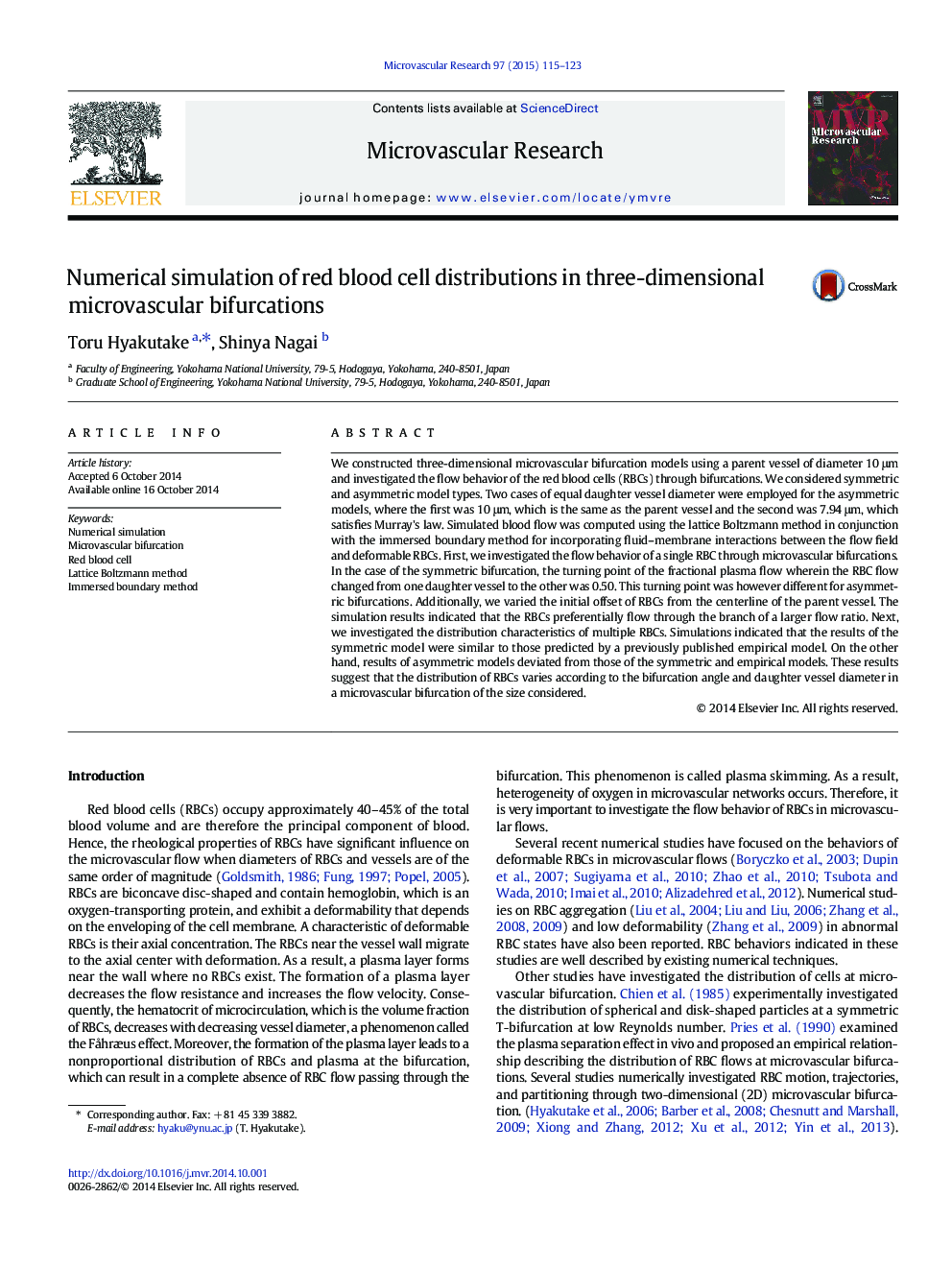| کد مقاله | کد نشریه | سال انتشار | مقاله انگلیسی | نسخه تمام متن |
|---|---|---|---|---|
| 8341270 | 1541287 | 2015 | 9 صفحه PDF | دانلود رایگان |
عنوان انگلیسی مقاله ISI
Numerical simulation of red blood cell distributions in three-dimensional microvascular bifurcations
ترجمه فارسی عنوان
شبیه سازی عددی توزیع سلول های قرمز در بیوفیتوری های میکروسکوپی سه بعدی
دانلود مقاله + سفارش ترجمه
دانلود مقاله ISI انگلیسی
رایگان برای ایرانیان
کلمات کلیدی
موضوعات مرتبط
علوم زیستی و بیوفناوری
بیوشیمی، ژنتیک و زیست شناسی مولکولی
زیست شیمی
چکیده انگلیسی
We constructed three-dimensional microvascular bifurcation models using a parent vessel of diameter 10 μm and investigated the flow behavior of the red blood cells (RBCs) through bifurcations. We considered symmetric and asymmetric model types. Two cases of equal daughter vessel diameter were employed for the asymmetric models, where the first was 10 μm, which is the same as the parent vessel and the second was 7.94 μm, which satisfies Murray's law. Simulated blood flow was computed using the lattice Boltzmann method in conjunction with the immersed boundary method for incorporating fluid-membrane interactions between the flow field and deformable RBCs. First, we investigated the flow behavior of a single RBC through microvascular bifurcations. In the case of the symmetric bifurcation, the turning point of the fractional plasma flow wherein the RBC flow changed from one daughter vessel to the other was 0.50. This turning point was however different for asymmetric bifurcations. Additionally, we varied the initial offset of RBCs from the centerline of the parent vessel. The simulation results indicated that the RBCs preferentially flow through the branch of a larger flow ratio. Next, we investigated the distribution characteristics of multiple RBCs. Simulations indicated that the results of the symmetric model were similar to those predicted by a previously published empirical model. On the other hand, results of asymmetric models deviated from those of the symmetric and empirical models. These results suggest that the distribution of RBCs varies according to the bifurcation angle and daughter vessel diameter in a microvascular bifurcation of the size considered.
ناشر
Database: Elsevier - ScienceDirect (ساینس دایرکت)
Journal: Microvascular Research - Volume 97, January 2015, Pages 115-123
Journal: Microvascular Research - Volume 97, January 2015, Pages 115-123
نویسندگان
Toru Hyakutake, Shinya Nagai,
